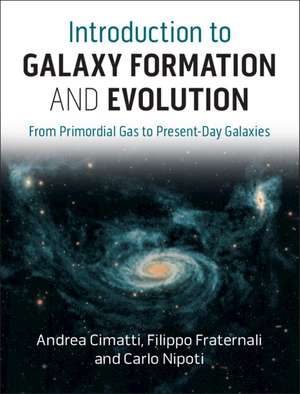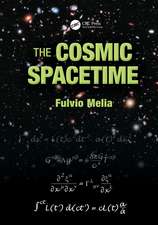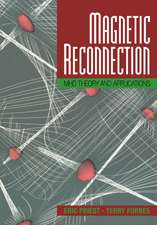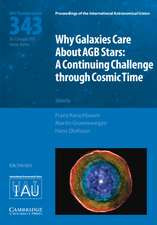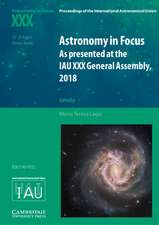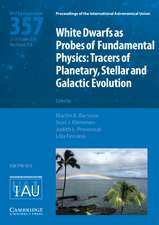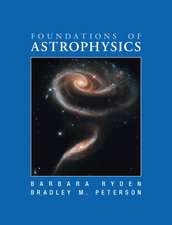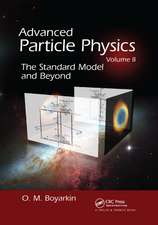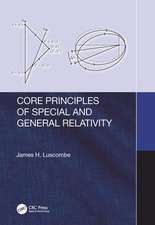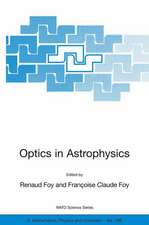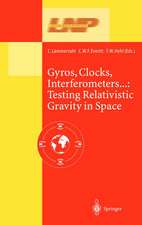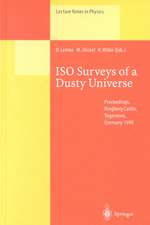Introduction to Galaxy Formation and Evolution: From Primordial Gas to Present-Day Galaxies
Autor Andrea Cimatti, Filippo Fraternali, Carlo Nipotien Limba Engleză Hardback – 16 oct 2019
Preț: 434.42 lei
Preț vechi: 472.20 lei
-8% Nou
Puncte Express: 652
Preț estimativ în valută:
83.14€ • 90.27$ • 69.83£
83.14€ • 90.27$ • 69.83£
Carte disponibilă
Livrare economică 01-15 aprilie
Livrare express 15-21 martie pentru 64.53 lei
Preluare comenzi: 021 569.72.76
Specificații
ISBN-13: 9781107134768
ISBN-10: 1107134765
Pagini: 582
Ilustrații: 245 b/w illus.
Dimensiuni: 192 x 252 x 30 mm
Greutate: 1.41 kg
Editura: Cambridge University Press
Colecția Cambridge University Press
Locul publicării:New York, United States
ISBN-10: 1107134765
Pagini: 582
Ilustrații: 245 b/w illus.
Dimensiuni: 192 x 252 x 30 mm
Greutate: 1.41 kg
Editura: Cambridge University Press
Colecția Cambridge University Press
Locul publicării:New York, United States
Cuprins
Preface; 1. Introduction; 2. The cosmological framework; 3. Present-day galaxies as a benchmark for evolutionary studies; 4. Present-day star-forming galaxies; 5. Present-day early-type galaxies; 6. The environment of present-day galaxies; 7. Formation, evolution and properties of dark matter halos; 8. Main ingredients of galaxy formation theory; 9. From recombination to reionisation; 10. Theory of galaxy formation; 11. Observing galaxy evolution; Appendix A. Acronyms; Appendix B. Constants and units; Appendix C. Astronomical compendium; Appendix D. Physics compendium; References; Index.
Recenzii
'An impressive achievement which presents a detailed account of the remarkable progress in our understanding of how galaxies formed and evolved over the past 13 billion years. The authors have brought together the latest theoretical and observational developments in this fast-paced subject carefully explaining with helpful illustrations the underlying physical concepts.' Richard Ellis, University College London
'This is an admirable introduction to the formation of the galaxies, a key aspect of modern cosmology, and blends fundamental aspects of astrophysics with recent observational constraints.' Joseph Silk, Institut d'Astrophysique de Paris
'With a broad sweep of physics and a wide canvas, this book is pitched at the level of master's and graduate students. From diffuse gas through dark matter haloes to galaxies today, this is an excellent text to learn the narrative of modern theories of galaxy formation.' Wyn Evans, University of Cambridge
'Our picture of galaxy formation and evolution, though still tentative and incomplete, is one of the major scientific achievements of the past half century. But seeing this picture in its full glory has mostly been the privilege of professional researchers in the field. Cimatti, Fraternali, and Nipoti have aimed to open the view to astrophysics students at the master's level, and they have succeeded brilliantly. Their clear, comprehensive, and readable textbook will guide astrophysicists and other interested scientists all the way to the frontiers of this exciting field.' Michael Fall, Space Telescope Science Institute, Baltimore
'This is an admirable introduction to the formation of the galaxies, a key aspect of modern cosmology, and blends fundamental aspects of astrophysics with recent observational constraints.' Joseph Silk, Institut d'Astrophysique de Paris
'With a broad sweep of physics and a wide canvas, this book is pitched at the level of master's and graduate students. From diffuse gas through dark matter haloes to galaxies today, this is an excellent text to learn the narrative of modern theories of galaxy formation.' Wyn Evans, University of Cambridge
'Our picture of galaxy formation and evolution, though still tentative and incomplete, is one of the major scientific achievements of the past half century. But seeing this picture in its full glory has mostly been the privilege of professional researchers in the field. Cimatti, Fraternali, and Nipoti have aimed to open the view to astrophysics students at the master's level, and they have succeeded brilliantly. Their clear, comprehensive, and readable textbook will guide astrophysicists and other interested scientists all the way to the frontiers of this exciting field.' Michael Fall, Space Telescope Science Institute, Baltimore
Notă biografică
Descriere
A comprehensive examination of nearly fourteen billion years of galaxy formation and evolution, from primordial gas to present-day galaxies.
